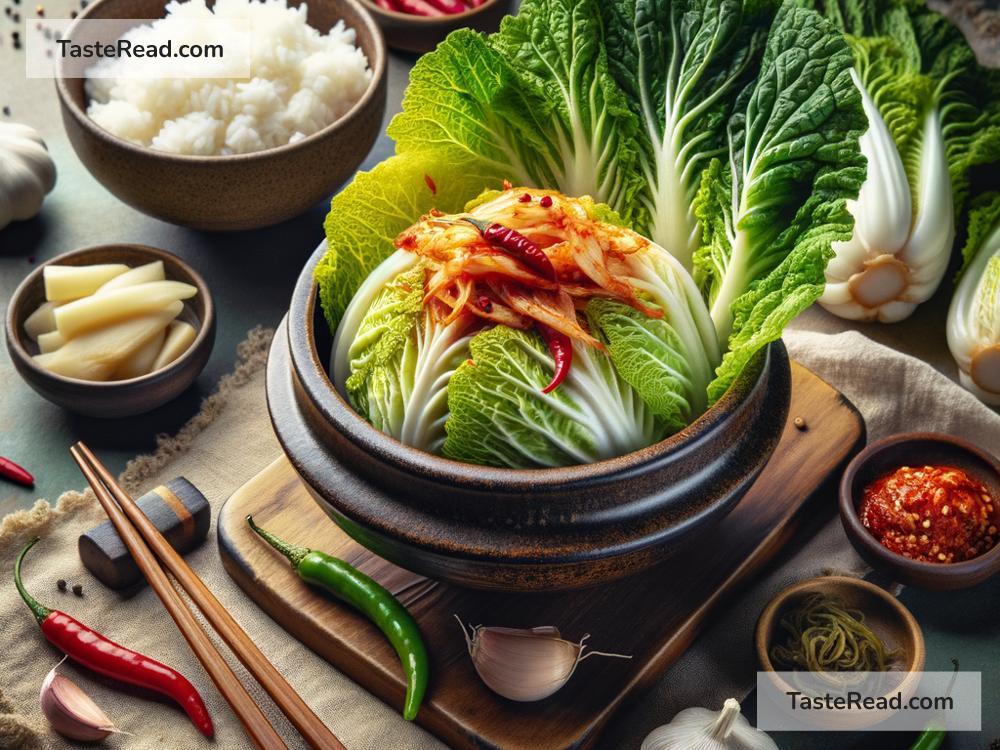The Historical Significance of Napa Cabbage in Korean Cuisine
Korean food is known for its rich flavors, colorful dishes, and health benefits. At the heart of this culinary tradition is napa cabbage, a vegetable that has become a symbol of Korean cuisine. Napa cabbage, also known as “baechu” in Korean, plays an important role in Korean history, culture, and cooking. Its story is more than just about food—it reflects the resilience, creativity, and traditions of the Korean people.
What Is Napa Cabbage?
Napa cabbage is a type of leafy vegetable that belongs to the brassica family, which includes broccoli, kale, and cauliflower. It has pale green, tender leaves and a slightly sweet, mild flavor. Originally native to China, napa cabbage spread across East Asia, including Korea, centuries ago. Its ability to thrive in Korea’s climate and its versatility made it a staple ingredient in Korean households.
Napa Cabbage and Kimchi: A Perfect Pair
If you’ve heard of Korean food, chances are you’ve heard of “kimchi.” Kimchi is a fermented vegetable dish that comes in many varieties, but the most popular version is made with napa cabbage. This spicy, tangy, and crunchy dish is Korea’s most iconic food and has been a part of Korean culture for more than 1,500 years. Kimchi is not just a side dish; it represents Korea’s history, identity, and way of life.
How did napa cabbage become the star ingredient for kimchi? Historically, Koreans faced long, harsh winters where fresh vegetables were hard to find. To prepare for the cold months, they developed methods to preserve food by fermenting it. Napa cabbage turned out to be ideal for this process because of its sturdy texture and ability to absorb flavors during fermentation. Its layers of leaves could hold the spicy chili paste and seasonings, creating the bold and balanced flavors we associate with kimchi today.
A Historical Perspective
Korean cuisine evolved alongside the country’s history. During the Three Kingdoms period (57 BCE–668 CE), early forms of kimchi were made using radishes and other vegetables, but napa cabbage wasn’t part of the picture yet. It wasn’t until the Goryeo dynasty (918–1392 CE) that napa cabbage became a commonly used vegetable in Korean households. Its introduction revolutionized the way people made kimchi.
During the Joseon dynasty (1392–1897), the techniques for making napa cabbage kimchi were refined, and the dish gained greater importance. By this time, chili peppers—introduced to Korea around the late 16th century—were included in kimchi recipes, giving the dish its signature spicy flavor. Kimchi made with napa cabbage became a cornerstone of Korean meals, symbolizing health, balance, and harmony.
Cultural Importance
Napa cabbage kimchi is more than just food—it’s a cultural treasure. In Korea, the tradition of making kimchi, known as “kimjang,” is a communal activity with deep cultural significance. Every autumn, families and communities gather to prepare large batches of kimchi to store for the winter. This tradition has been passed down through generations and is recognized by UNESCO as an Intangible Cultural Heritage of Humanity.
Kimjang is not only about preparing food; it’s about bonding with family and neighbors, sharing knowledge, and preserving traditions. Napa cabbage plays a starring role in kimjang, as its quality and freshness can determine how delicious the kimchi will be.
Health Benefits of Napa Cabbage
Napa cabbage is not just important culturally; it’s also a nutritious vegetable that contributes to the health benefits of Korean cuisine. Rich in vitamins C and K, folate, and fiber, it supports digestion and boosts the immune system. When fermented into kimchi, napa cabbage enhances these health benefits, as probiotics produced during fermentation promote gut health and overall well-being.
Koreans have long believed that kimchi is one of the reasons their traditional diet is so healthy. In fact, many studies have shown that regular consumption of kimchi, particularly napa cabbage kimchi, can help reduce inflammation, improve digestion, and even contribute to weight management.
Modern Significance
Today, napa cabbage continues to hold a special place in Korean kitchens. While kimchi remains its most famous usage, napa cabbage is also used in soups, stews, stir-fries, and wraps. As Korean cuisine gains global popularity, napa cabbage has become a familiar ingredient in international kitchens as well. People all over the world are now enjoying the taste and health benefits of this humble vegetable.
In recent years, Korea has worked to protect its food traditions, including the cultivation of napa cabbage. Farmers take great care to grow high-quality napa cabbage, knowing its importance to both the country’s food culture and economy.
Conclusion
Napa cabbage is more than just a vegetable in Korean cuisine—it’s a symbol of history, resilience, and unity. From its introduction in Korea centuries ago to its role in kimchi, napa cabbage has shaped the way Koreans eat and live. Its presence in everyday meals and cultural traditions highlights the importance of food in connecting people to their heritage.
As Korean food continues to spread across the globe, napa cabbage remains a proud ambassador of Korea’s culinary legacy. Whether you’re enjoying a bowl of kimchi stew or a plate of fresh kimchi, take a moment to appreciate the humble napa cabbage and the rich tradition it represents. Its story is one of survival, creativity, and celebration—just like the story of Korean cuisine itself.


